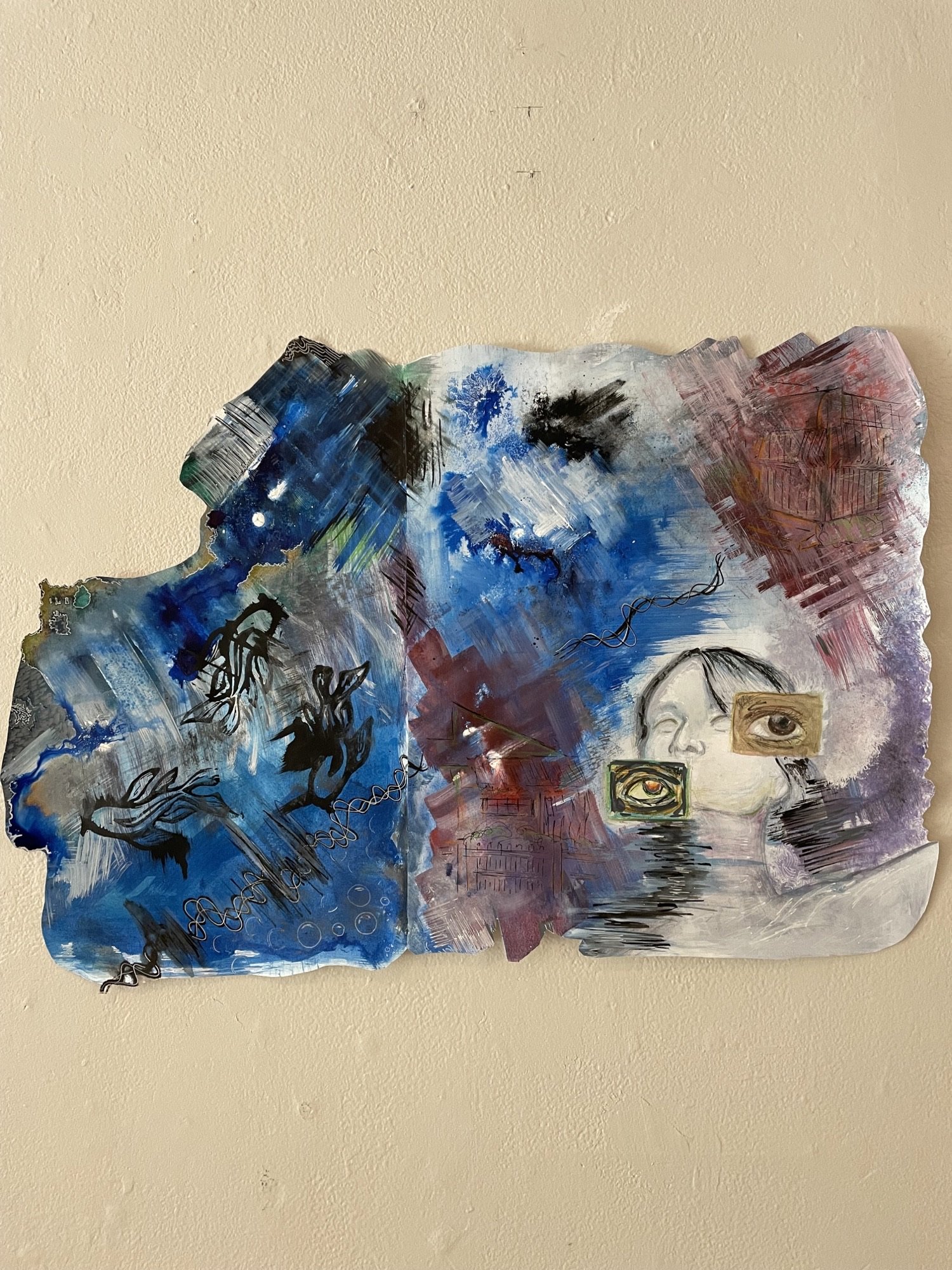Before we sat down on their front porch to talk about the release of Admiral Radio’s new album Songs From The Vault, I spied a vintage door leaning on the wall in a side room of Coty Hoover and Becca Smith’s charming Earlewood Park home. Described by Becca as “a project that I haven’t tackled yet,” the door’s flaking paint and unusual upper glass panes certainly appeared to be the bones of something that could be repurposed to great artistic effect. The songs on the new album are like that, worn yet comfortable tunes with the familiarity of an old coat of paint peeling from a door, layers upon layers that reveal older truth underneath.
“We held on to the concept behind this album for a while, wanting something a little more simple and stripped down,” Smith says.
The duo’s debut, Sounds Like You, was produced using a full band in the studio, something they rarely have the luxury of having on stage in a live setting.
“We wanted to have something out there that reflected our pure duo sound,” Hoover admits. “We made a point to have this not be extremely polished.”
The recording was done with the same production team of Carl Burnitz and Todd Mathis who helmed the debut, but this time around they eschewed the trappings of studio mikes, overdubs, and multiple takes in favor of a single condenser microphone hanging in the middle of a room between the two performers. Every song on the album is a single, complete take in that setting with nothing added–just Coty and Becca singing to each other and playing guitars and banjo.
“A lot of the songs on this are ones we already play, songs we have collected over the last few years that we are drawn to for different reasons,” Smith says. “Sometimes it’s the lyrics, the story that the song tells, or it could be the way it makes us feel, and the way we sing it together.”
Hoover and Smith sing together like the married couple they are, with their two voices playing off each other in close harmonies that sound as natural as a spring breeze bending the branches of a live oak tree. The sidewalk that constrains and conceals the tree’s roots is an apt metaphor for modern musical expectations that limit what people know about the history behind what they are hearing.
Smith and Hoover both have deep connections, personal stories that link them to many of these songs and recording them was a bit of a history lesson for them, too.
“One of my earliest memories growing up is a stuffed animal that I had,” Smith recalls. “It played ‘You Are My Sunshine,’ which if you really pay attention to the lyrics is pretty morbid.”
Hoover’s recollection touches on the ancient ballad, “Oh My Darling, Clementine.”
“My uncle used to sing ‘Clementine’ to us while we were swinging in the back yard with the other kids,” He says. “I love songs like that where I have a specific memory of it, but when we play it now, I’m always thinking ‘Man, that’s a really sad song.’”
Hoover and Smith’s easy familiarity with this material belies their own relatively recent vintage; so, when they decided to reach this far back to find songs for the new album, it took a little thought and some effort to research the sources.
“With this project has come the recognition that some of our favorite songs span a stretch of time that’s much longer than we realized,” Smith says. “The songs we chose go back as far as the 1800s. To dive into the details of who wrote what, when was it published, and thinking about life then versus life now, and that we are still singing that same song two hundred years later, it’s really powerful. It has been a humbling and enriching experience to bring these into our own light and sing them in our own way.”
The pandemic forced Hoover and Smith to reassess their musical career and focus on what mattered the most, which for them was the connection with others through making music.
“Like most other full-time musicians, we were a bit lost in 2020 when the pandemic hit,” Hoover says. “We had plans to put out our debut album and tour behind it the rest of the year, and all of that was gone, suddenly.”
The duo had to quickly figure out how to make ends meet financially and yet still continue to make music. They filled the gaps musically with livestreams, including a fully produced album release concert filmed professionally at the Sumter Opera House, but it wasn’t quite the same, Smith says.
“The livestreams we did from home were a way to connect that was very restorative for my sense of community and faith in human connections through those very uncertain times,” She says. “We really, truly needed that, and it was an incredible time of camaraderie and support, even though we weren’t able to see our audiences in person. The Opera House show was a strange experience, in that it felt like a dress rehearsal, not quite the real thing.”
A little more than two years into marriage and going through a pandemic, Smith says that they have learned a lot in the process about what they really want.
“We are embracing the bits that aren’t quite perfect,” She says. “The pandemic experience has loosened up our attitude towards performance. Before, I was so serious and wanted everything to be just right every time. Now, I just want to play; I really just want to play.”
You can hear Admiral Radio play this week when they celebrate the release of Songs From The Vault in concert at Downtown Church, 2030 Gregg Street. Doors open at 6:30, they will play from 7-8. A donation is requested, along with whatever food and beverage you prefer to bring in with you for this casual, communal musical evening.



































